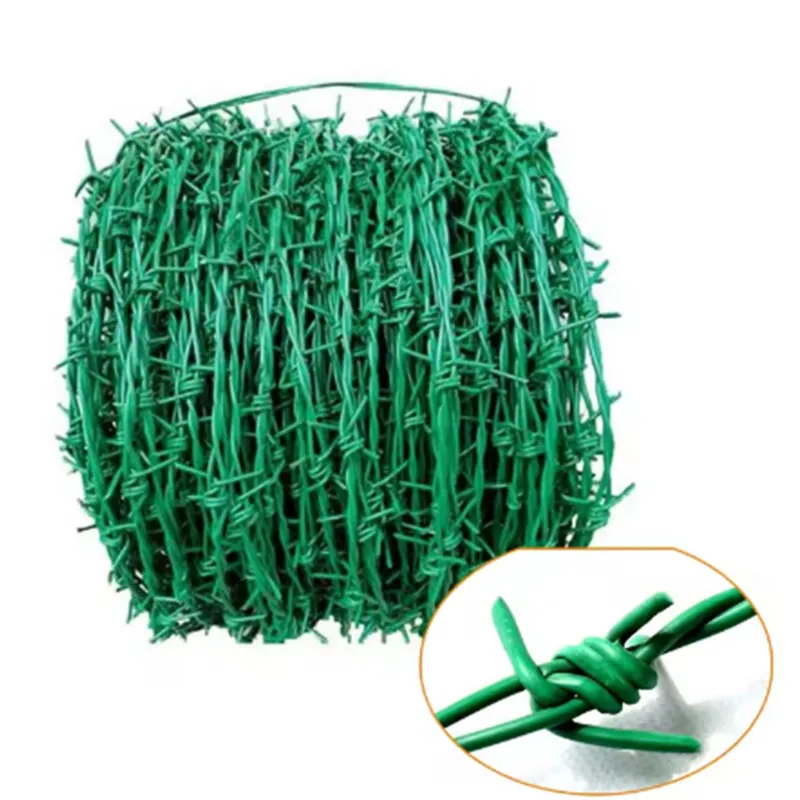-
 Phone:
Phone: -
 Email:
Email:

baling wire gauge
Understanding Baling Wire Gauge A Guide for Efficient Usage
Baling wire is an essential component used in various industries, including agriculture, recycling, and manufacturing. It serves the purpose of bundling, packaging, or securing materials for easier handling, storage, and transport. One critical aspect of baling wire is its gauge, which directly affects the wire's strength, flexibility, and suitability for particular applications. This article explores the concept of baling wire gauge, its importance, and how to select the right gauge for your needs.
What is Baling Wire Gauge?
The gauge of a wire refers to its thickness, which is measured in either American Wire Gauge (AWG) or in millimeters (mm). A lower gauge number indicates a thicker wire, while a higher gauge number indicates a thinner wire. The gauge of baling wire plays a vital role in determining its strength and durability. For instance, a wire with a gauge of 12 (which is approximately 2.05 mm in diameter) is significantly stronger and more robust than a wire with a gauge of 16 (approximately 1.29 mm in diameter).
Importance of Baling Wire Gauge
1. Strength and Durability The primary function of baling wire is to hold together materials securely. Therefore, selecting the appropriate gauge is essential to ensure that the wire can withstand the pressure and weight of the bundled materials. Using a wire that is too thin may result in breakage or failure, leading to inefficiencies and potential safety hazards.
2. Application-Specific Choices Different applications require specific characteristics in baling wire. For example, agricultural applications often involve securing heavy bales of hay or straw, which necessitates thicker wire to handle the load. Conversely, lighter materials, like paper or cardboard in recycling, typically require thinner wire that can be easily manipulated.
3. Cost Efficiency Selecting the correct gauge of baling wire can also contribute to cost savings. While thicker gauges generally cost more, they might be necessary for heavy-duty applications. Using a wire that is too light for a heavy application will lead to increased maintenance expenses, as more wire may be needed over time to replace broken or ineffective wire.
Choosing the Right Baling Wire Gauge
baling wire gauge

When selecting baling wire, it’s crucial to consider several factors
1. Material Type Different materials have varying weight and density. Test the weight and size of the materials you plan to bundle. For heavier materials like hay, a gauge of 12 or 14 may be appropriate. For lighter materials, gauges of 16 or 18 might suffice.
2. Bale Size The size of the bundle also influences the gauge selection. Larger bales require stronger wire to secure the weight effectively. Always consult the manufacturer's recommendations based on the bale size you are working with.
3. Environmental Conditions The storage and transport conditions can affect wire performance. For outdoor applications, consider wire that is treated or coated to resist corrosion, especially if exposed to moisture.
4. Handling Consider how the wire will be handled. Thicker wire may be more challenging to work with but offers higher durability, while thinner wire is easier to manipulate but may not hold up under stress.
5. Local Regulations In some regions, there may be regulations regarding the use of baling wire, particularly in agricultural settings. Be sure to check local guidelines and standards.
Conclusion
Choosing the right baling wire gauge is fundamental for ensuring that your materials are secured efficiently and safely. By understanding the relationship between gauge thickness and wire performance, you can make informed decisions that will enhance productivity and cost-effectiveness in your operations. Whether you are involved in agriculture, recycling, or manufacturing, the right baling wire can make all the difference in handling your materials effectively. Always prioritize the characteristics of the materials you are working with and the specific requirements of your application to select the most suitable wire gauge.
-
Wire Mesh for Every Need: A Practical SolutionNewsJul.25,2025
-
Steel Fences: Durable, Secure, and Stylish OptionsNewsJul.25,2025
-
Roll Top Fencing: A Smart Solution for Safety and SecurityNewsJul.25,2025
-
Cattle Farm Fencing Solutions for Maximum SecurityNewsJul.25,2025
-
Affordable Iron Binding Wire SolutionsNewsJul.25,2025
-
Affordable Galvanized Wire SolutionsNewsJul.25,2025
-
Wire Hanger Recycling IdeasNewsJul.25,2025








